Colombo travel - Sri Lanka, Asia
Colombo, the bustling capital of Sri Lanka, is a vibrant coastal city located on the island’s southwestern coast. As the country’s main port and commercial hub, it serves as a gateway for travelers exploring Sri Lanka. Colombo is known for its rich cultural diversity, blending Sinhalese, Tamil, Muslim, and Burgher influences. The city’s unique history, shaped by Portuguese, Dutch, and British colonial rule, is evident in its stunning architecture, including landmarks like the Old Parliament Building and the General Post Office. You can explore key attractions such as the serene Gangaramaya Temple, the lively Galle Face Green promenade, and the fascinating National Museum. Colombo's modern development, with sleek hotels, shopping malls, and restaurants, blends seamlessly with its historic charm, making it a dynamic destination. Plus, the city’s thriving culinary scene offers a delicious mix of local flavors, with street food tours that highlight authentic Sri Lankan cuisine like kottu roti and fresh seafood.
Population: Estimate 88,000 people (as of 2024)
Economy: Tourism is a significant part of Colombo’s economy, with visitors drawn to its historical landmarks, cultural experiences, and dynamic food scene. The city is also a hub for the textile and apparel industry, which is a major contributor to Sri Lanka’s exports, and plays a crucial role in the global tea trade.
Landmarks: Gangaramaya Temple, Galle Face Green, Viharamahadevi Park, National Museum of Colombo, Independence Memorial Hall, Beira Lake, Jami Ul-Alfar Mosque, Seema Malakaya
Sri Lanka
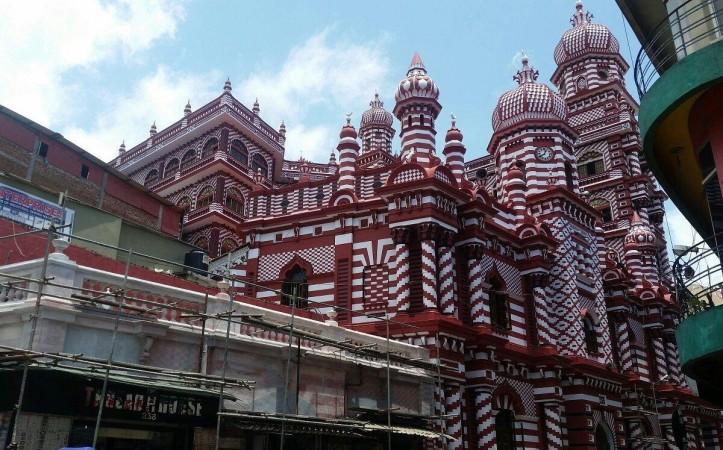
Overview of Colombo
History & Cultural Influence
Colombo’s history spans over 2,000 years, rooted in its role as an ancient trading port. Its strategic position on east-west trade routes attracted merchants from Roman, Arab, and Chinese civilizations, making it a center for commerce and cultural exchange. The city’s colonial era began in 1505 when the Portuguese established a fort to protect their trading interests, followed by Dutch and British rule. The British era, which began in 1796, left a lasting impact on Colombo’s urban development, with the construction of schools, roads, and public buildings that shaped the city’s modern character. Colombo played a key role during World War II as an Allied military base, further solidifying its importance in the region. After Sri Lanka gained independence in 1948, Colombo evolved into a cosmopolitan city while retaining elements of its colonial past.
Culturally, Colombo’s diverse ethnic composition—Sinhalese, Tamils, Muslims, and Burghers—has shaped the city’s festivals, cuisine, and daily life. Architecturally, it boasts a blend of colonial-era buildings like the Old Parliament and modern skyscrapers. The Pettah district’s bustling markets reflect its historical significance as a trading hub. Colombo’s culinary traditions are a fusion of flavors, influenced by the city’s trading history, with spices playing a key role. The city’s cultural institutions, such as the National Museum, celebrate its rich heritage, while ongoing urban development projects are helping Colombo balance its historical charm with its future as a thriving commercial center.
Interaction with The Locals
When visiting Colombo, travelers can expect warm, friendly interactions with the locals, reflecting the city’s rich cultural diversity. Colombo is a multi-ethnic city where Sinhalese, Sri Lankan Tamils, and Sri Lankan Moors make up the majority, alongside smaller communities like Burghers, Malays, and Indian Tamils. This diversity shapes the city's vibrant cultural landscape, with a blend of festivals, traditions, and cuisines.
Locals are generally welcoming and hospitable towards tourists, often eager to help and engage in conversations about their culture. While English is widely spoken, especially in tourist areas, learning a few Sinhala or Tamil phrases is always appreciated and can enhance interactions. Visitors should also be mindful of local customs—respecting religious sites, dressing modestly when necessary, and avoiding public displays of affection—helping ensure positive and respectful interactions throughout their stay.
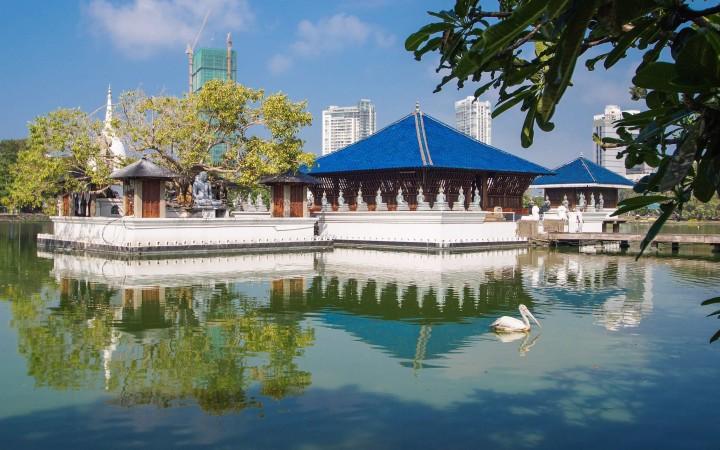
Gangaramaya Temple - © gather
Top Attractions in Colombo
Colombo offers a rich blend of history, culture, and natural beauty that attracts travelers. Top attractions include Gangaramaya Temple, a vibrant mix of architecture and spirituality, and the bustling Galle Face Green, perfect for oceanfront strolls and local street food. Don’t miss the National Museum of Colombo for a deep dive into Sri Lanka’s fascinating history and cultural heritage.
Gangaramaya Temple
Location: 61 Sri Jinaratana Road, Colombo
Gangaramaya Temple is one of Colombo's most cherished spiritual landmarks, blending Sri Lankan, Thai, Indian, and Chinese architectural influences. This vibrant temple complex is more than just a place of worship; it houses a museum, a library, and various shrines, offering a deep dive into Buddhist culture. Whether you're interested in religion or architecture, Gangaramaya is a fascinating stop.
Galle Face Green
Location: Galle Face, Colombo
Stretching along the coast, Galle Face Green is a popular spot where locals and tourists alike come to unwind. It's perfect for enjoying a leisurely walk, flying kites, or indulging in delicious street food, all while soaking in the breathtaking views of the Indian Ocean. It’s the ideal place to catch one of Colombo’s famous sunsets.
Viharamahadevi Park
Location: Colombo 7 (near the National Museum)
Viharamahadevi Park, Colombo’s largest and oldest park, is a peaceful haven right in the heart of the city. With its scenic gardens, fountains, and the prominent Buddha statue, it’s a great spot for relaxation or a quiet stroll, offering a refreshing contrast to the city's busy pace.
National Museum of Colombo
Location: 4 Albert Crescent, Colombo 7
The National Museum of Colombo is a treasure trove of Sri Lanka’s history and culture. It boasts an impressive collection of ancient relics, royal regalia, and traditional art. A visit here is like a journey through time, making it a must-see for history buffs and those curious about Sri Lankan heritage.
Independence Memorial Hall
Location: 7 Independence Square, Colombo
Built to commemorate Sri Lanka's independence in 1948, Independence Memorial Hall is both a historic landmark and a serene space for reflection. Surrounded by beautiful gardens and statues of national heroes, it’s a great place to appreciate the country’s history and enjoy a peaceful afternoon.
Seema Malakaya Temple
Location: Beira Lake, Colombo
Floating on the tranquil waters of Beira Lake, Seema Malakaya Temple offers a peaceful escape from the city's hustle. Known for its striking bronze Buddha statues and serene setting, this meditation temple is the perfect spot for a quiet moment of reflection amidst Colombo’s busy streets.
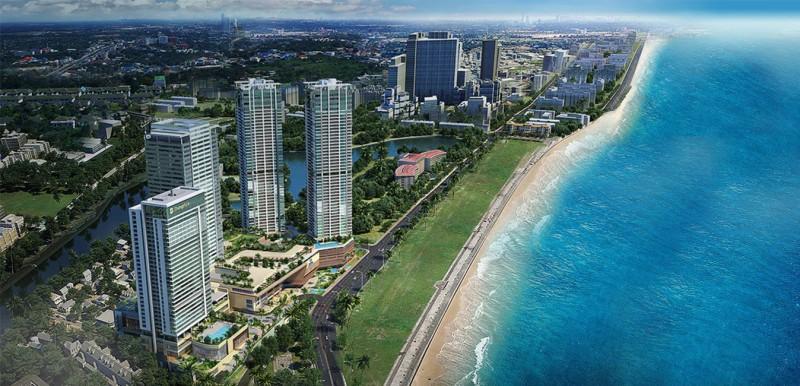
Galle Face Green - © gather
Must-Try Dishes in Colombo
When visiting Colombo, you must try the city’s iconic rice and curry, a flavorful combination of rice served with a variety of spicy curries and sambols. Don’t miss kottu roti, a popular street food made with chopped flatbread, vegetables, and meat, stir-fried to perfection. For something sweet, indulge in watalappan, a rich coconut custard dessert flavored with jaggery and cardamom.
Rice and Curry
A staple meal in Sri Lanka, rice and curry is a flavorful combination of rice served with an assortment of curries made from vegetables, fish, or meat, along with sambols (spicy relishes) and crispy poppadum. Each meal offers a variety of curries, showcasing the rich blend of spices and ingredients unique to Sri Lankan cuisine.
Kottu Roti
Kottu Roti is a popular street food made from chopped godamba roti (a type of flatbread), stir-fried with vegetables, eggs, and meat, often chicken or beef. The rhythmic chopping sound from the preparation is iconic in Colombo’s street food scene, adding excitement to this hearty, flavorful dish.
Lamprais
Lamprais is a delicious meal consisting of rice cooked in meat stock, accompanied by sides like mixed meat curry, meatballs (frikkadels), shrimp paste, and fried eggplant. All these flavorful components are wrapped in a banana leaf and steamed, offering a unique taste rooted in Dutch Burgher culinary traditions.
Hoppers (Appa)
Hoppers are bowl-shaped pancakes made from fermented rice flour and coconut milk, commonly enjoyed for breakfast or dinner. They come in various forms, with egg hoppers being a popular option, often served with spicy sambols to enhance their distinctive flavor and texture.
Watalappan
Watalappan is a rich coconut custard dessert made with coconut milk, jaggery, eggs, and flavored with cardamom and cashews. Popular among the Muslim community, this sweet treat is a favorite during festive occasions, highlighting the use of traditional Sri Lankan ingredients like coconut and jaggery.
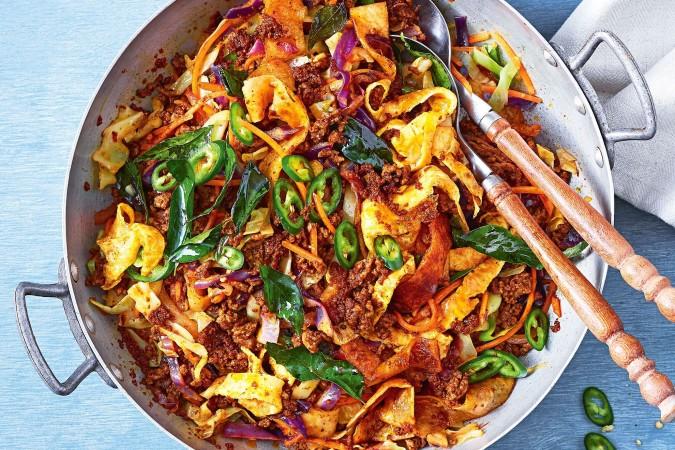
Kottu Roti - © gather
Weather in Colombo: Best Time to Visit
Temperature
Colombo enjoys warm weather year-round, with average highs ranging from 28-32°C (82-90°F) and lows between 22-25°C (72-77°F). The hottest period is typically from March to May, with April seeing peak temperatures. The heat in urban areas can feel intense during the day, but evenings offer some relief with cooler, more comfortable temperatures.
Rainfall
Colombo has two primary monsoon seasons:
- Southwest Monsoon: May to September
- Northeast Monsoon: December to February
- The heaviest rainfall occurs in May and from October to November during the inter-monsoon period. The driest months tend to be January and February.
Best Time to Visit
The best time to visit Colombo is from December to February, when rainfall is low, and temperatures are pleasant, ranging from 23-31°C (73-88°F). This period is ideal for sightseeing and beach activities. July and August can also be good times to visit, with reduced rainfall, although sunshine might be a bit limited.
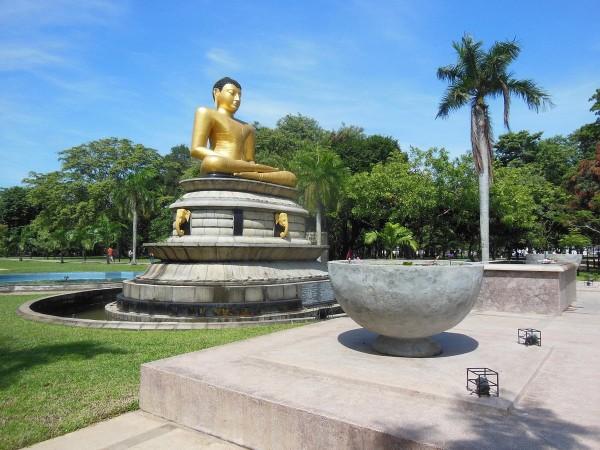
Viharamahadevi Park - © Globetrotter045
Festivals & Local Celebrations
Navam Perahera
Time: February
Held at the Gangaramaya Temple, Navam Perahera is a grand Buddhist procession showcasing traditional dancers, drummers, and beautifully decorated elephants. The vibrant parades, along with cultural and religious rituals, make this event a colorful highlight of Colombo’s cultural calendar.
Vesak Poya
Time: Full moon in May
Vesak Poya celebrates the birth, enlightenment, and death of Lord Buddha. During this festival, Colombo is transformed with vibrant lanterns and pandals that depict Buddhist stories. The city is filled with a spiritual ambiance as locals engage in religious activities and charitable acts, making it a truly meaningful event.
Independence Day
Time: February 4th
Sri Lanka’s Independence Day marks the country's liberation from British rule in 1948. In Colombo, the celebrations feature parades with military displays, cultural performances, and speeches by national leaders. The city is decked out in flags and decorations, reflecting the nation’s pride and history.
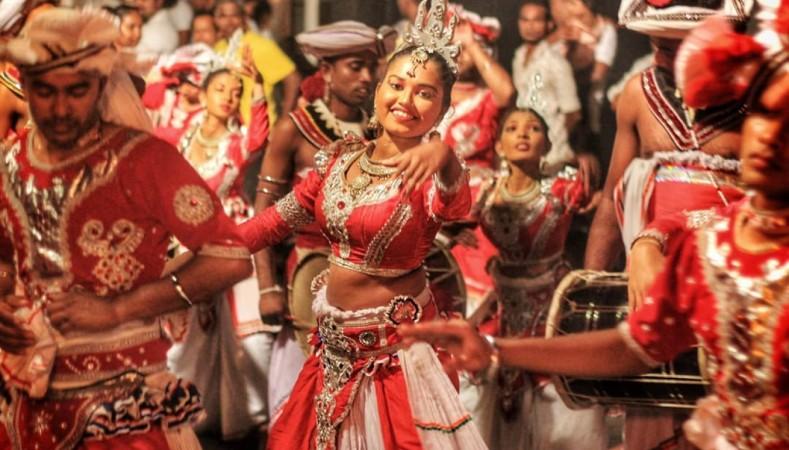
Navam Perahera - © gather
Culture Etiquette in Pakse
Greetings and Interactions
When greeting locals, a slight bow or nod paired with the phrase "Ayubowan" (meaning "may you live long") is a warm and respectful way to say hello. Handshakes are common, but let the other person initiate, especially with the opposite gender. Always use your right hand or both hands when giving or receiving objects, and avoid touching anyone’s head, as it is considered sacred.
Dress Code
Modesty is key, particularly when visiting religious sites. Make sure to cover your shoulders and knees when entering temples or sacred places. Additionally, remember to remove your shoes and hats before entering temples or homes.
Religious Respect
Buddhism is the predominant religion in Sri Lanka, so it's important to respect Buddhist customs. Avoid turning your back or pointing your feet at Buddha statues, and refrain from taking selfies with them, as this is considered disrespectful. Women should also avoid touching or handing objects directly to monks.
Dining Etiquette
Before and after meals, it’s customary to wash your hands. If eating without utensils, use your right hand, as this is the traditional way. It’s polite to sample a bit of everything offered, and leaving a small amount of food on your plate indicates you’re satisfied.
General Behavior
Public displays of affection are generally frowned upon, and it's important to maintain a calm demeanor, as loud or angry outbursts are inappropriate. Always ask permission before photographing people, and steer clear of sensitive topics like politics or the civil war in conversations.
Visiting Homes
When invited to someone’s home, remove your shoes before entering. It’s thoughtful to bring a small gift for the host, but avoid giving alcohol unless you're sure it’s appropriate. If refreshments are offered, it’s polite to accept, as refusing may be considered impolite.
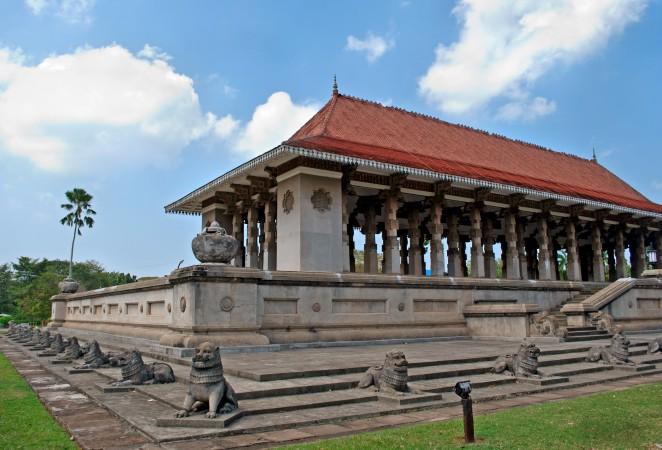
Independence Memorial Hall - © Charaka Ranasinghe
Essential Travel Information
Getting to Colombo
Airport Transfers
Bandaranaike International Airport is located about 32 km north of Colombo's city center, with several options for transfers. Airport taxis are available and can be pre-booked, with prices starting around €45 for a trip to Colombo. Shuttle services run express buses to the city center every 30 minutes, with a journey time of about an hour. For more comfort, private transfers can be arranged through companies like Suntransfers, offering professional drivers and the convenience of advance booking.
Getting Around Colombo
Public Transit
Colombo offers an extensive bus network, with services running from the Central Bus Stand and other terminals throughout the city. Additionally, the city's rail network connects major stations such as Fort Station and Maradana Station, offering a more scenic way to travel.
Taxis and Ride-Hailing
Metered taxis are readily available across Colombo, and ride-hailing services like Uber and local apps make it easy to get around the city.
Tuk-Tuks
Tuk-tuks, or auto rickshaws, are a popular and affordable option for short trips. They are usually cheaper than taxis, but it's important to negotiate the fare before starting your journey to avoid misunderstandings.
Private Hire
If you're planning to explore the city or take a day trip, many companies offer private car hire with drivers, providing a convenient and flexible option for sightseeing.
Des articles pour vous

Explore Yala National Park - Sri Lanka Travel, Asia
Tucked away in Sri Lanka’s southeastern corner, Yala National Park is where wild nature meets deep tradition. Known worldwide for its leopard population, the park is also home to elephants, sloth bears, crocodiles, and hundreds of bird species. Beyond wildlife, Yala opens doors to a cultural landscape dotted with ancient temples, Buddhist ruins, and coastal villages. For travelers seeking more than just a safari, Yala offers a chance to explore eco-tourism, local communities, and sacred heritage sites.
Population: The Yala National Park area doesn’t have a human population.
Economy: The economy around Yala National Park thrives on a blend of eco-tourism, agriculture, and local services. Safari tours, eco-lodges, and cultural experiences drive steady income for nearby towns like Tissamaharama and Kataragama, supporting thousands of families.
Landmarks: Famous for Block I of Yala and wildlife encounters, including elephants, sloth bears, crocodiles, and exotic bird species.

Explore Galle - Sri Lanka Travel, Asia
Nestled on Sri Lanka’s southern coastline, Galle is a vibrant city where history meets the sea. Its cobbled streets, colonial architecture, and serene beaches make it a must-visit destination for travelers seeking a blend of culture, adventure, and relaxation. A UNESCO World Heritage site, Galle captivates visitors with its Dutch Fort, bustling markets, and friendly locals. Whether you’re exploring the ramparts at sunset or savoring fresh seafood by the shore, Galle promises an unforgettable journey into Sri Lanka’s heritage.
Population: Approximately 113,000 in 2023.
Economy: Galle’s economy thrives on tourism, trade, and fisheries. The city’s historic fort, colonial architecture, and coastal charm draw thousands of international visitors each year, making tourism its main economic driver. Fishing remains vital for local livelihoods, supplying fresh seafood across the region.
Landmarks: Famous for the Galle Fort, Dutch Reformed Church & Maritime Museum, and Unawatuna Beach.

Explore Bentota - Sri Lanka Travel, Asia
Nestled along Sri Lanka’s southwestern coast, Bentota is a tropical paradise that blends golden beaches, vibrant culture, and thrilling adventures. Famous for its calm waters, luxury resorts, and scenic river estuary, Bentota has become a top destination for travelers seeking both relaxation and authentic experiences. From serene beach walks at sunrise to adrenaline-pumping water sports, this coastal town offers a perfect balance of leisure and exploration. With its proximity to Colombo and Galle, Bentota is easy to reach, making it an ideal stop for both short escapes and extended holidays.
Population: Approximately 37,000 in 2023.
Economy: Bentota’s economy thrives mainly on tourism, which drives local businesses such as hotels, restaurants, and wellness retreats. The town also benefits from fishing, coconut cultivation, and handicrafts like wood carving and batik textiles. Many residents rely on the growing demand for water sports and Ayurvedic treatments, making tourism the backbone of both income and employment in the area.
Landmarks: Famous for Bentota Beach, Bentota River Safari, and Kande Vihara Temple.

Explore Mirissa - Sri Lanka Travel, Asia
Mirissa is a charming coastal town on Sri Lanka’s southern shoreline. Known for its golden beaches, turquoise waters, and vibrant marine life, it has become a must-visit stop for travelers exploring the island. Many come for whale watching, surfing, and sunset views at Coconut Tree Hill, but Mirissa offers much more than postcard beauty. The fishing boats you see anchored by the bay carry generations of stories. Local traditions, delicious cuisine, and a laid-back rhythm of life shape every visitor’s experience.
Population: Approximately 4,700 in 2023.
Economy: Mirissa’s economy is largely shaped by its coastal location. Fishing has long been the backbone of local livelihoods, with generations relying on the Indian Ocean for income. In recent decades, tourism has become the main driver of growth, thanks to whale watching, surfing, and beachside hospitality.
Landmarks: Famous for Mirissa Beach, Coconut Tree Hill, and Parrot Rock Bridge.

Explore Nuwara Eliya - Sri Lanka Travel, Asia
Tucked away in the Central Highlands of Sri Lanka, Nuwara Eliya is often called “Little England”. With its rolling tea plantations, cool misty mornings, and colonial charm, this mountain town feels like a step into another world. Travelers come here to breathe fresh air, walk through flower gardens, sip the finest Ceylon Tea, and enjoy a pace of life far from the island’s busy cities. Whether you’re drawn by scenic landscapes, heritage architecture, or the warmth of its people, Nuwara Eliya is a destination that blends nature, culture, and history in perfect harmony.
Population: Approximately 781,000 in 2023.
Economy: Nuwara Eliya’s economy thrives mainly on tea production, as it sits in the heart of Sri Lanka’s central highlands, famous worldwide for Ceylon Tea. The city also benefits from a growing tourism industry, attracting visitors with its colonial charm, cool climate, and scenic landscapes.
Landmarks: Famous for Gregory Lake, Hakgala Botanical Garden, and Victoria Park.

Explore Sukau - Malaysia Travel, Asia
Nestled on the banks of the Kinabatangan River in Sabah, Malaysian Borneo, Sukau is a destination where wildlife, culture, and conservation come together. Known as one of Asia’s top spots for river safaris and eco-tourism, this quiet village offers a front-row seat to encounters with Bornean orangutans, pygmy elephants, proboscis monkeys, and exotic birdlife.
Population: Approximately 1,400 in 2019.
Economy: Sukau’s economy is shaped by its riverine location and natural resources. Traditionally, the Orang Sungai community relied on fishing, small-scale farming, and forest gathering for their livelihood. Today, the village has shifted toward eco-tourism, with river cruises, jungle trekking, and homestays providing income.
Landmarks: Famous for the Kinabatangan River cruises, Gomantong Caves, and Ox-bow lakes and wetlands.
